Product-led growth makes onboarding both easier and harder: It's easier because the product does all the talking with no humans involved. The reason it's harder is because the product does all the talking with no humans involved.
You've probably experienced both sides: Sometimes, you fight with complicated demo booking flows and unrelenting customer success managers. Other times, you wish someone would just point you to the setting you've just dug through 28 pages of documentation to find, but didn't.
The best product-led companies do this better: Their onboarding teaches you everything you need and nothing you don't. This ensures a great user experience: You're never waiting on a salesperson, but never feel lost either.
In this article, we'll show you 10 onboarding flows from product-led companies that strike this balance to create a user experience that engages and retains new users.
We'll go over:
- Why the product-led growth model is rapidly becoming the go-to choice for SaaS growth.
- How some of the most successful product-led companies in the world create engaging, user-friendly PLG onboarding flows.
- Examples of Product-led growth onboarding that increase user acquisition, retention, and satisfaction, ultimately fueling the growth of these companies.
Let's dive in:
TL;DR
Only have a few minutes? Here are this article's highlights:
- The PLG revolution: Product-Led Growth (PLG) continues its ascent. It lets SaaS companies acquire, engage and convert more users with fewer people. Onboarding is the first in-product impression, which makes it one of the most important parts.
- Learning from the best: Some of the best PLG onboarding experiences are Slack's product education, Zoom's simplicity and Canva's personalized user journey.
- How to create an effective product-led onboarding flow: Implement interactive learning, simplify the process and offer personalized guidance. If it suits you products, add some gamification.
What is Product-Led Growth Onboarding?
First thing first: what is a Product-Led Growth strategy?
Product-Led Growth, or PLG, is a business growth strategy that relies on an outstanding product to attract, retain, and satisfy users. Rather than focusing on big-ticket clients, PLG aims to draw in a wide, diverse array of users and turn them into enthusiastic advocates for the product.
Within this framework, PLG Onboarding is the process of introducing new users to your product's features and benefits in an engaging and user-friendly way. Think of it as the first impression your users get, and when done right, it leads to increased loyalty and long-term user engagement - ultimately boosting your Customer Lifetime Value.
PLG companies who invest in onboarding during the early stages of the customer journey often report their users quickly understand and enjoy the product more. The flow-on effect from that is customer loyalty, and fans of the product are far more likely to share their positive experiences with others, leading to even more growth.
With that in mind, let’s take a look at the PLG onboarding strategies of some of the world’s most successful product-led companies to date.
Top 10 Best-in-Class PLG Onboarding Flows
In Product-Led Growth companies, the product is the main selling point, driving customer acquisition, activation, and retention. The onboarding flow facilitates users to understand and unlock the product's value.
Onboarding is one of the most influential indicators of success when it comes to product-led growth strategies, and these 10 product-led companies are the pinnacle to aim for when it comes to onboarding flows.
1) Slack: PLG Onboarding Through Learning
Slack's onboarding shines with its hands-on learning. This is a classic product-led growth strategy. After starting with a welcome screen and short survey, users are prompted to take personalized actions that are relevant to their needs.
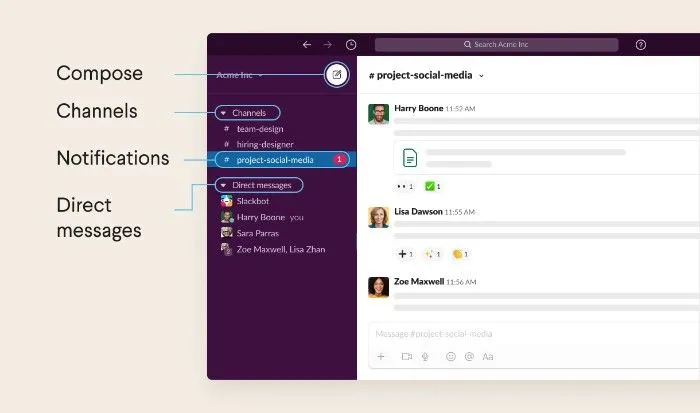
Specific Strategies:
This lean, interactive approach helps users learn by doing, making the platform feel less overwhelming. Oftentimes, a delay in time to value early on in the user journey can increase churn. Slack's emphasis on personalized learning through doing helps the end user get involved from the start and feel at home faster.
Takeaways:
Let your users get their hands dirty - early. Think about your existing product and find ways to engage them with personalized interactions as quickly as possible. A captivating onboarding experience can help them understand your product better and stick around longer.
2) Zoom: PLG Onboarding Done Simplistically
Zoom's onboarding process stands out for being super simple. Friction reduction is the key to success for any PLG company, but the stakes are so much higher when it comes to product-led onboarding. This is where Zoom shines.
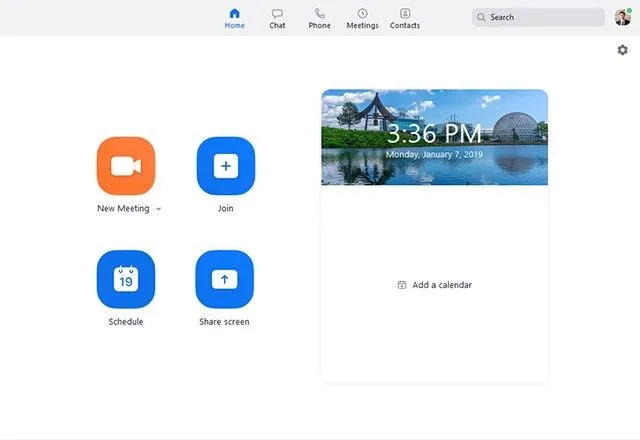
Specific Strategies:
The first time a customer uses Zoom is usually a few minutes before their first Zoom call begins. The time to value during onboarding is critical. Users need to set up an account, open the client in a browser (or download it), log in, and start the call within minutes - or let's be honest, sometimes within seconds for the procrastinators. To achieve this, Zoom reduces almost all friction and guides the user to achieve the primary objective - getting on the call.
Takeaways:
For any product-led company, keeping onboarding simple and frictionless can make your product more inviting, leading to more users and longer stays.
3) Canva: PLG Onboarding Leveraging Visuals
It should be no surprise that Canva's onboarding stands out for being personal and visually stunning. Canva is such a diverse product with an almost infinite crosssection of ICPs.

In order to acquire customers through freemium or free trial models like Canva offers, product-led companies must ensure a strong onboarding flow. When using a freemium approach in a sales cycle, it's crucial to avoid giving users a reason to think the paid plan isn't worth it. Therefore, the onus is on the growth team, the marketing team, and the product team to showcase the product's use cases and personalize the experience. This is what Canva's onboarding experience excels at.
Specific Strategies:
Thanks to extensive marketing efforts, Canva is able to drill down its users into segments that are reflected in the product itself. By that, I mean every single customer potentially has a different objective they want to achieve with Canva - from birthday invitations to a VC pitch deck creation and everything in between.
To leverage this in the onboarding flow, the platform uses a questionnaire to tailor the onboarding experience to the user's needs in a visually compelling way by pre-filling the dashboard with templates and content those users are most likely to need to create.
This personalized onboarding experience increases user engagement and satisfaction by reducing that critical time-to-value metric. It's worth noting that other PLG companies like Airtable and Notion are following suit and adopting a similar personalized onboarding flow.
Takeaways:
Make your onboarding personal and pleasing to the eyes. It can increase satisfaction and make users feel more connected to your product.
4) Asana: PLG Onboarding Leveraging Checklists
Asana's use of checklists in its onboarding process mirrors its ethos of productivity and precision, employing this insightful and ingenious strategy for initial user engagement.
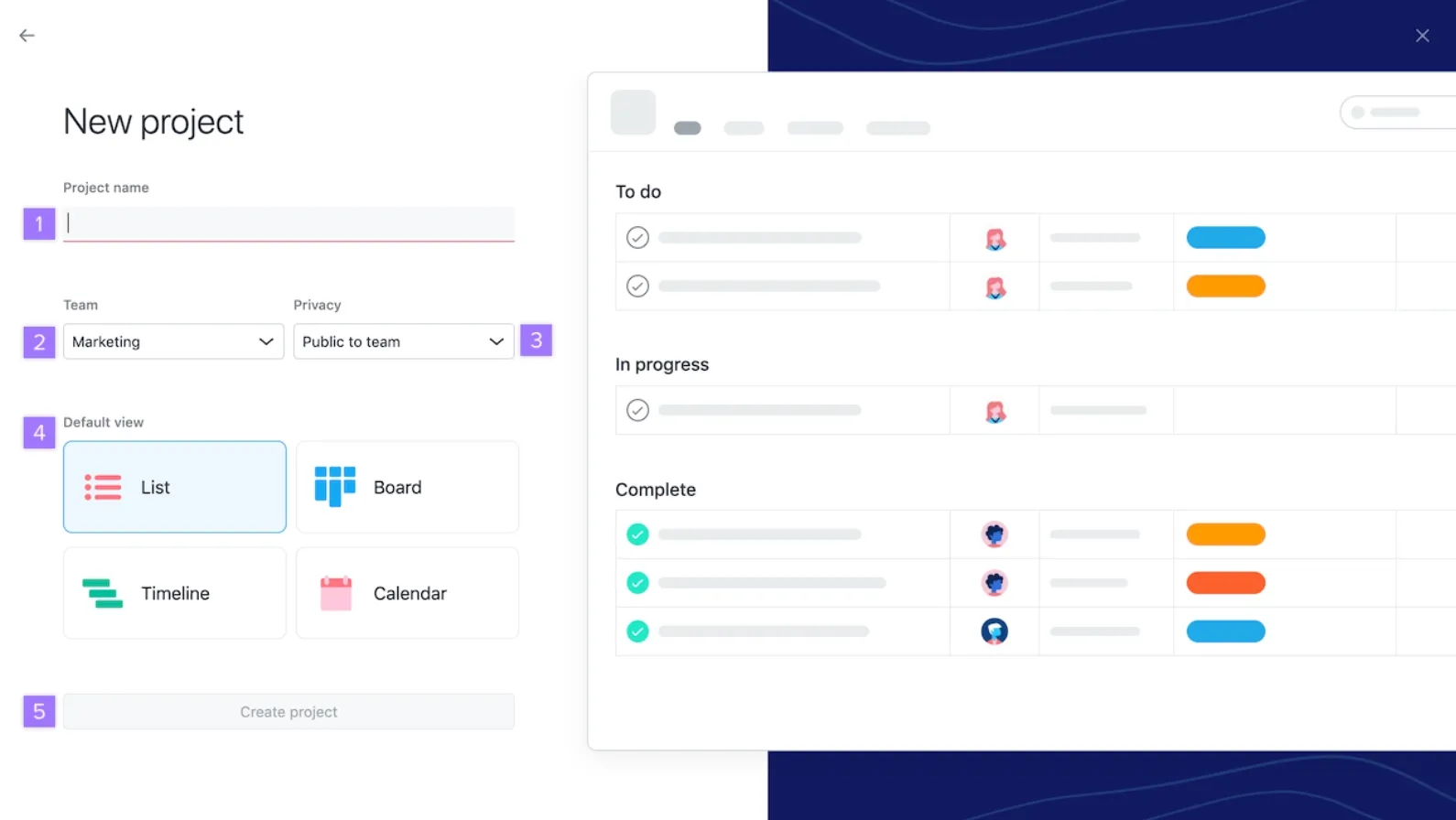
Specific Strategies:
Instead of confronting new users with a plethora of features, Asana’s product-led onboarding presents a familiar checklist. It transforms the daunting task of learning a new platform into manageable steps. This immersive, hands-on learning fast-tracks user familiarity and confidence, making it an effective alternative to sales-led onboarding.
The checklist is flexible and customizable, fitting individual team requirements. This personalized approach in their product-led growth strategy reduces reliance on sales teams and enhances user-centric functionality.
Takeaways:
Asana's checklist strategy is a model for effective user engagement. It provides immediate value by showing users how the product can simplify their tasks, skyrocketing product adoption and user retention. Additionally, personalization creates a perception of value that promotes loyalty and ongoing user engagement.
In essence, Asana’s product-led onboarding demonstrates how merging engagement, practicality, and core product values can revolutionize user tasks. It's a powerful strategy that turns onboarding from a process into a significant advantage.
5) Duolingo: PLG Onboarding Leveraging Gamification
Duolingo, the linguistic maestro of the digital age, has disrupted traditional learning methods with a product-led growth onboarding process that's as enjoyable as it is effective. The secret ingredient? Gamification, deftly woven into the fabric of its user journey.
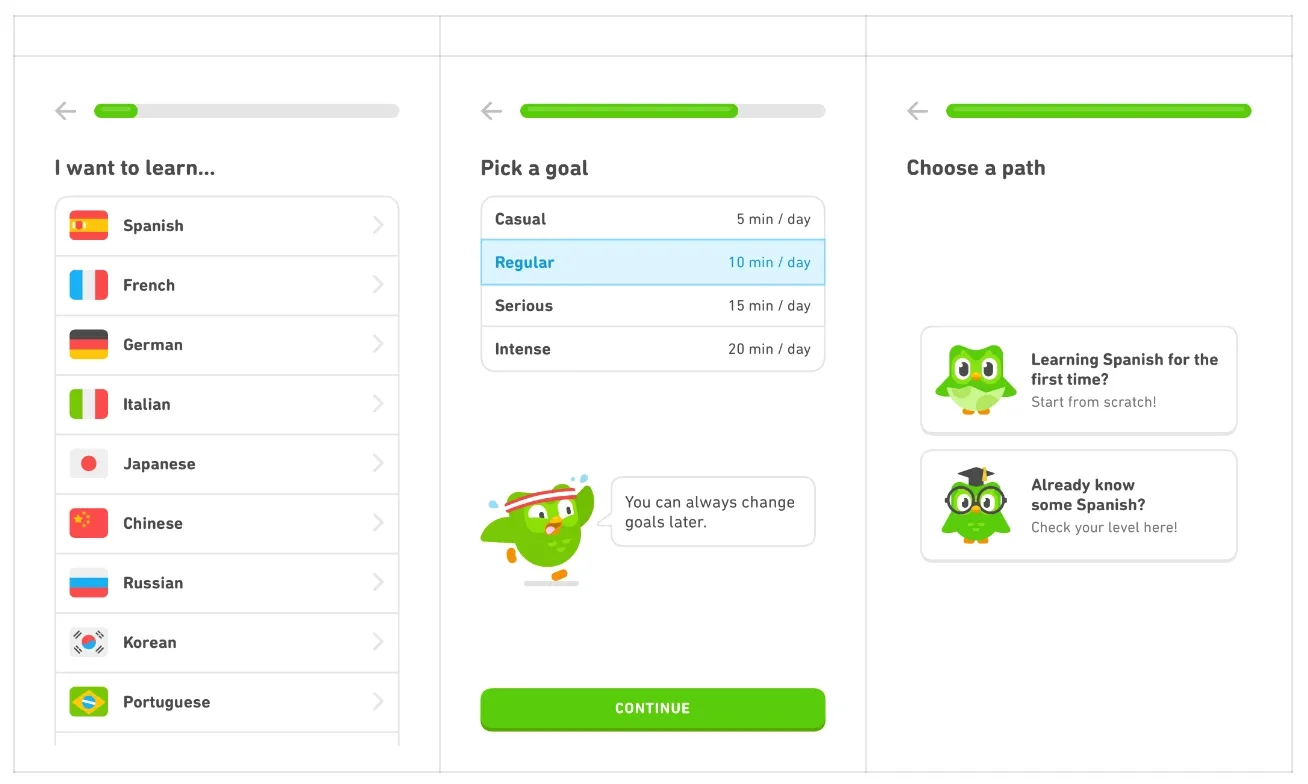
Specific Strategies:
In contrast to sales-led growth models, which rely heavily on a sales team pushing the product, Duolingo demonstrates the efficacy of a product-led strategy. They've gamified their onboarding process, making it a delightful adventure rather than a mundane tutorial. This vibrant approach places the end user at the heart of the experience, fostering a connection between them and the product right from the start.
Duolingo's gamification not only turns the learning process into a joyous journey, it also ingeniously drives customer acquisition. Users don't just interact with the product - they play, they score, they conquer, and they are rewarded. This infuses the learning experience with a sense of accomplishment and keeps users eagerly returning for more.
But Duolingo doesn't stop there. They've carefully calibrated their challenges to maintain a balance between complexity and accessibility - neither too easy to bore nor too hard to overwhelm. This ensures that the user is engrossed in the product and the customer success rate remains high.
Takeaways:
Duolingo’s gamified approach offers invaluable insights for product-led businesses seeking to elevate their own onboarding process. By integrating fun and game-like elements, you transform your product from a mere software product into an engaging experience that users anticipate.
The concept of 'small wins' plays a significant role in this business strategy. These incremental achievements boost user satisfaction and motivate them to keep coming back, thereby helping PLG companies drive customer acquisition and maintain a healthy monthly recurring revenue.
Balancing complexity is another important lesson from Duolingo's playbook. Overwhelming users can lead to high churn rates, while a lack of challenge can result in user disinterest. Striking the right balance is key for customer success and plays a vital role in maintaining a healthy average revenue per user.
In a nutshell, Duolingo has innovatively applied the principles of product-led growth to turn onboarding from a mundane process into an immersive game. It serves as a stellar example for other PLG companies, illustrating that user retention and expansion revenue are well within reach through a thoughtfully crafted, enjoyable, and engaging flow for the user.
6) Airbnb: PLG Onboarding Tailored to User Segmentation
Airbnb, an exemplar in the sphere of product-led growth, demonstrates a keen understanding of its diverse user base, crafting two separate onboarding flows for hosts and travelers.

Specific Strategies:
Airbnb's sophisticated product-led strategy sidesteps the need for a sales team to bring in users. Instead, it provides personalized guidebooks leading hosts and travelers through the platform's unique features and capabilities. This tailored approach emphasizes Airbnb's dedication to user-centric experiences and fosters stronger customer loyalty.
Takeaways:
Airbnb’s distinct onboarding pathways offer vital lessons for PLG companies. By focusing on user-specific onboarding, you send a strong signal that you understand and value your user's unique needs. This boosts user commitment and can lead to impressive revenue growth.
Furthermore, such targeted onboarding strategies provide actionable insights for your customer success teams, informing more effective sales and marketing tactics. Airbnb's approach illustrates how a product-led growth model can significantly improve customer acquisition and retention while enhancing market share.
In essence, Airbnb's PLG onboarding shines in its user segmentation, proving how deeply understanding and addressing your user's distinct needs can bolster your product-led growth trajectory.
7) Notion: PLG Onboarding Featuring Hands-On Templates
Notion stands out with a product-led onboarding process featuring hands-on tutorials and pre-made templates, contributing to its reputation among successful PLG companies.

Specific Strategies:
Notion goes beyond the traditional sales-led approach. Instead of relying on sales teams or sales reps, it introduces users to its technology stack directly. The workspace tutorial and pre-made templates ensure users grasp the product's value instantly, stimulating an immediate "aha" moment that can prompt users to explore the tool further.
Takeaways:
Notion underscores the benefits of a product-led approach. Providing users a taste of your product's value during onboarding can inspire them to stick around, potentially reducing customer acquisition cost and boosting revenue growth.
8) Evernote: The Minimalist PLG Onboarding Flow
Evernote shines with its minimalist onboarding flow, moving away from the traditional sales and marketing model.
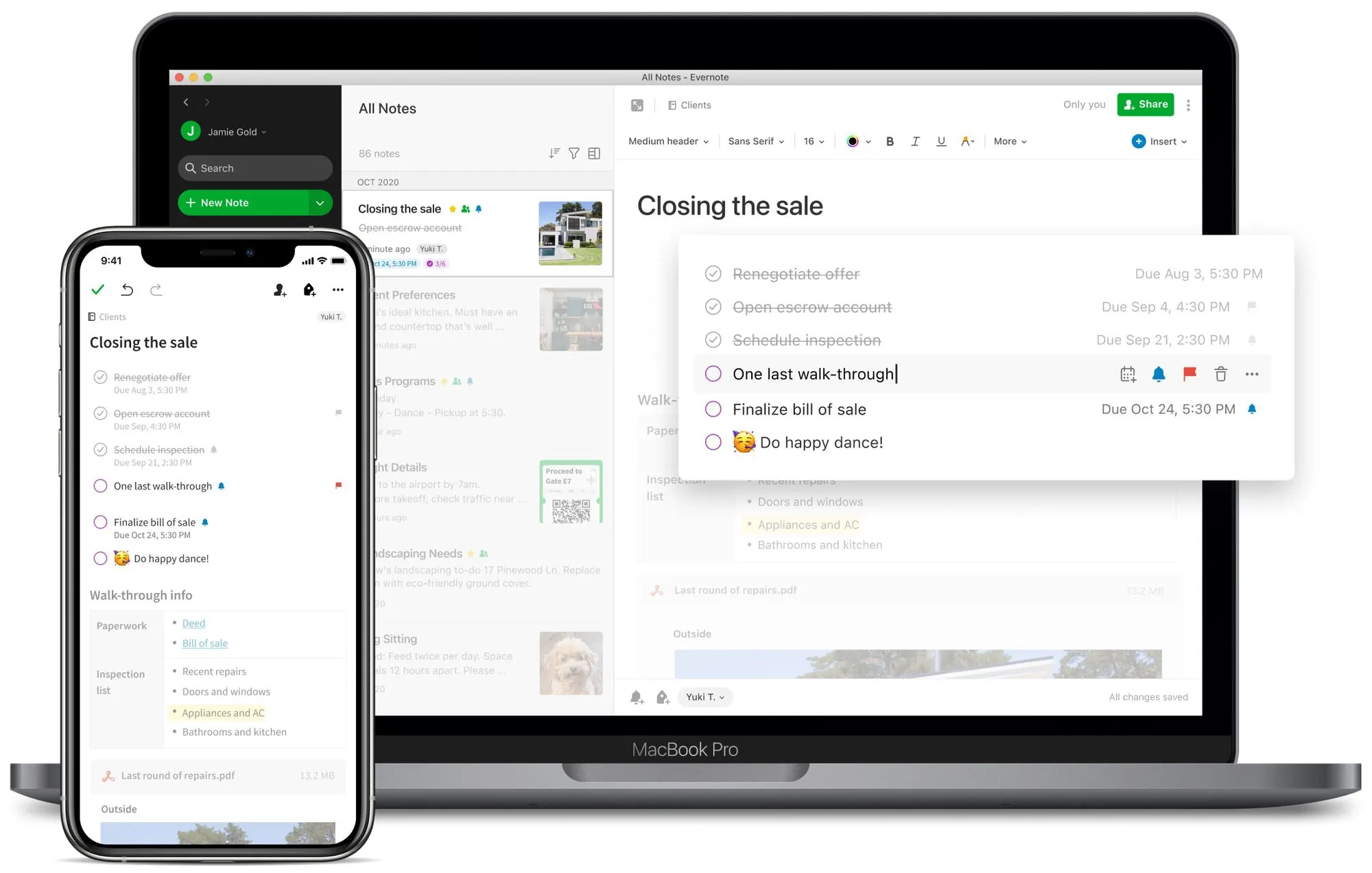
Specific Strategies:
Evernote takes a straightforward approach to onboarding, focusing on essential features instead of overwhelming users. By making it easy for users to get started, Evernote demonstrates the strengths of a product-led approach, acquiring customers without heavy reliance on a sales team.
Takeaways:
Evernote's approach highlights how simplicity can be powerful. An easy-to-grasp onboarding process can quickly familiarize users with your product, encouraging continued use and potentially increasing the number of product-qualified leads.
9) Grammarly: PLG Onboarding Demonstrating Immediate Product Value
Grammarly, another trailblazer among PLG companies, underscores its product-led growth model through an onboarding process that demonstrates immediate product value.
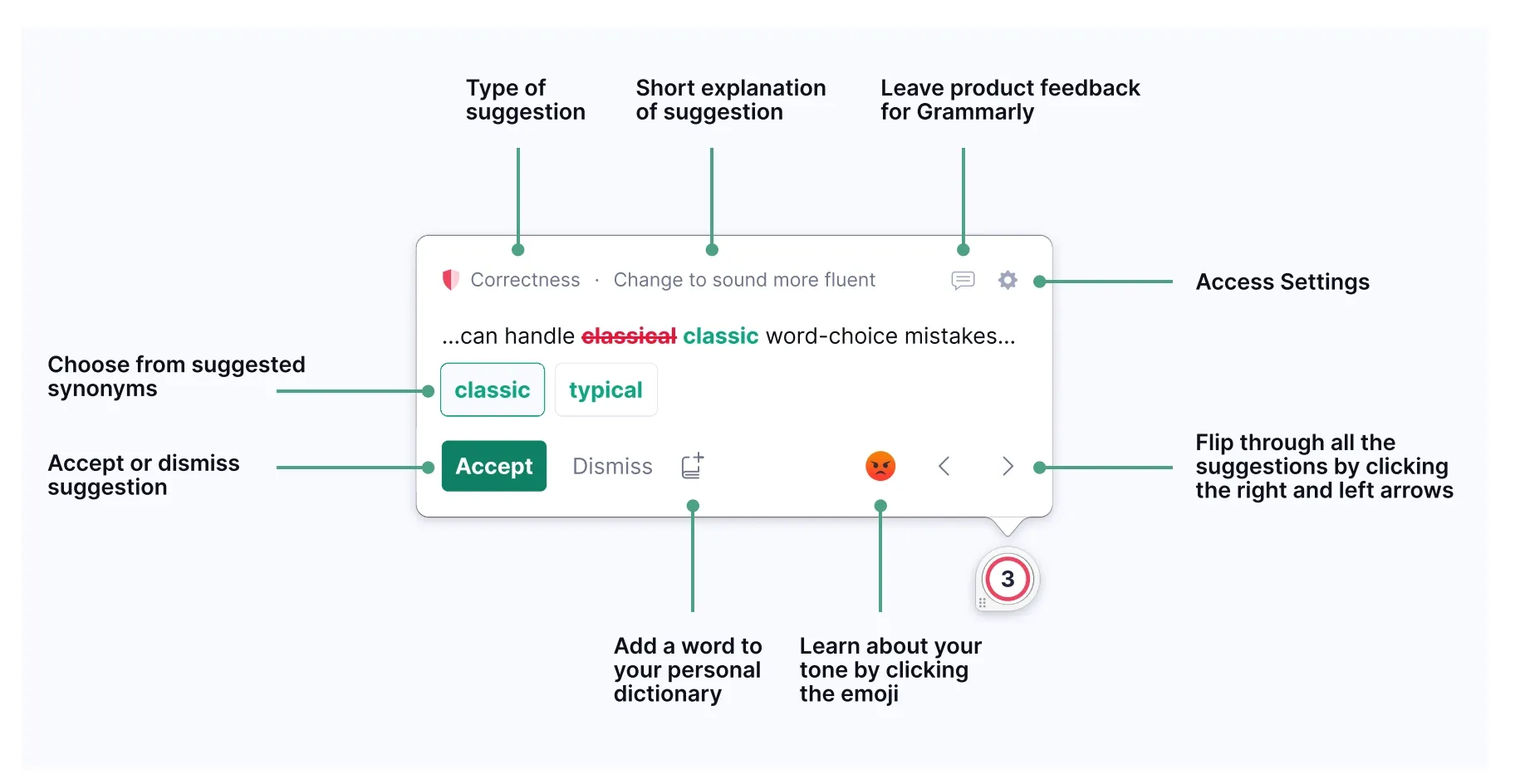
Specific Strategies:
Grammarly efficiently converts new users into customers by demonstrating how it enhances their writing in real-time. This instantaneous demonstration of value helps Grammarly generate revenue while also showing its commitment to user improvement.
Takeaways:
Elevate the user experience from the first interaction. Instantly demonstrate your product's utility and potential during onboarding to solidify user trust and boost long-term retention.
10) Headspace: PLG Onboarding Using Guided Tours
Headspace's onboarding process is guided, user-friendly, and an excellent example of how a PLG company can create an engaging customer journey.
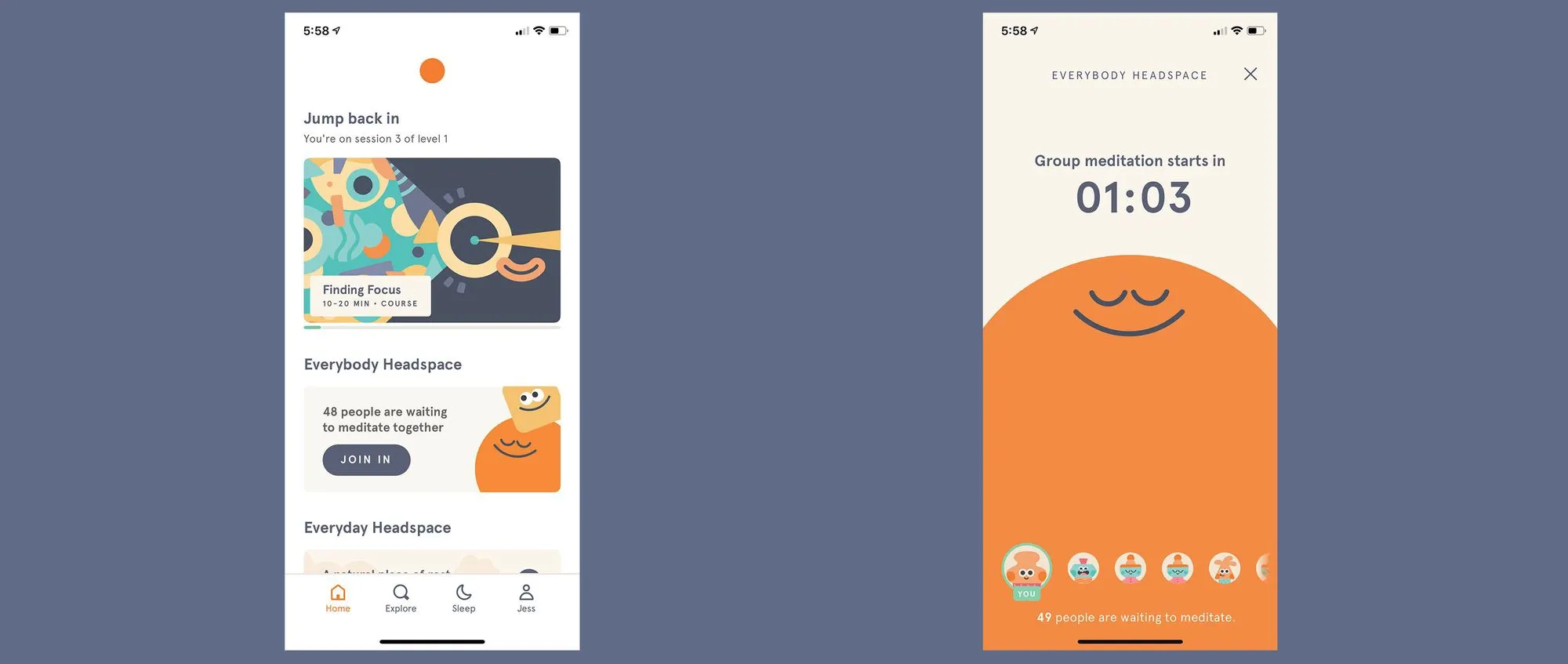
Specific Strategies:
Headspace offers a guided tour to introduce users to the app's basics and meditation techniques. This guided tour, devoid of human intervention, allows users to understand the product at their own pace, promoting internal alignment between the app and the user's personal goals.
Takeaways:
A step-by-step tour during onboarding, like Headspace’s, can help users understand your product, and possibly convert free trials to paying customers. This tactic supports customer success and adds to the whole company's revenue growth, especially when insights from a well-designed revenue dashboard are utilized. Effective Onboarding Matters For Product-Led Companies
Effective onboarding drives user adoption and retention for any product or service. It helps users understand and use the product's full potential, ensuring a positive initial experience.
Through clear instructions, personalized guidance, and interactive tutorials, onboarding helps users grasp the product's value and features, reducing confusion and enhancing their experience. It builds trust, increases engagement, and motivates users to explore further.
A well-executed onboarding process empowers users and reduces the likelihood of abandonment, leading to higher user adoption and improved long-term retention rates.
Practical Advice for Implementing Onboarding in a Product-Led Growth Model
If you want to enhance your Product-Led Growth (PLG) onboarding, consider strategies from companies like Slack, Zoom, Canva, Asana, Duolingo, Airbnb, Notion, Evernote, Grammarly, and Headspace.
Learning from the Onboarding Hall of Fame
- Interactive Learning: Like Slack, let users interact with your product firsthand, tasting the benefits themselves.
- Simplified Process: Follow Zoom's lead. Streamline your onboarding, making it as easy as pie.
- Personal Touch: Emulate Canva. Customize the onboarding based on user preferences, increasing their engagement.
- Guided Discovery: Learn from Asana. Guide users through your product, showing them its magic.
- Game On: Take a cue from Duolingo. Gamify your onboarding, making it a joyride that sparks engagement.
Tips for Your PLG Onboarding Strategy
- User Is King: Understand your users' desires and peeves, and create an onboarding experience that speaks their language.
- Deliver a Showstopper: Showcase your product's superpowers early to engage users.
- Champion Discovery: Let users explore your product's features. Guiding is essential, but self-discovery leads to lasting knowledge.
- Refine and Revamp: Use analytics to identify and overcome hurdles in your onboarding process. Continually fine-tune based on user feedback and data.
Creating a Show-Stealing Product
- The key to PLG is a product that steals the spotlight. Here's how:
- Design a product that aligns with your target audience's needs.
- Create a user experience as compelling as a page-turner.
- Deliver immediate value to the user.
- Use user feedback to continually improve your product.
- Make your product integral to the user's workflows, increasing its "stickiness."
You can improve your PLG strategy by mastering these strategies and focusing on delivering value to the user. In the PLG approach, the user experience is paramount, and effective onboarding is the first step.
Navigating the PLG Onboarding Thrill Ride
Creating a successful Product-Led Growth (PLG) onboarding strategy can be challenging. It's a key component of customer engagement and business growth. It's about creating an experience that users find irresistible.
Learning from companies that excel at onboarding can guide you toward creating a similarly successful process. They've established the benchmark with interactive, streamlined, and personalized user experiences.
Implementing these strategies is about more than just enhancing the onboarding process. It's about creating a product that doesn't just sell but genuinely impresses and satisfies users.
In the PLG approach, user experience is paramount. Effective onboarding is the first step toward creating that exceptional user experience.
The Final Word
Revolutionizing your onboarding process and supercharging user engagement through Product-Led Growth creates die-hard product enthusiasts. The benefits of embracing this approach include sky-high loyalty rates, turbo-charged growth, and transforming your user base into an army of brand ambassadors.
By mirroring a stellar PLG onboarding strategy akin to those above, you can look forward to increased user satisfaction, boosted retention rates, and exponential business growth. If you're still unsure or want to dive even deeper into PLG onboarding, check out our other posts on the blog.















